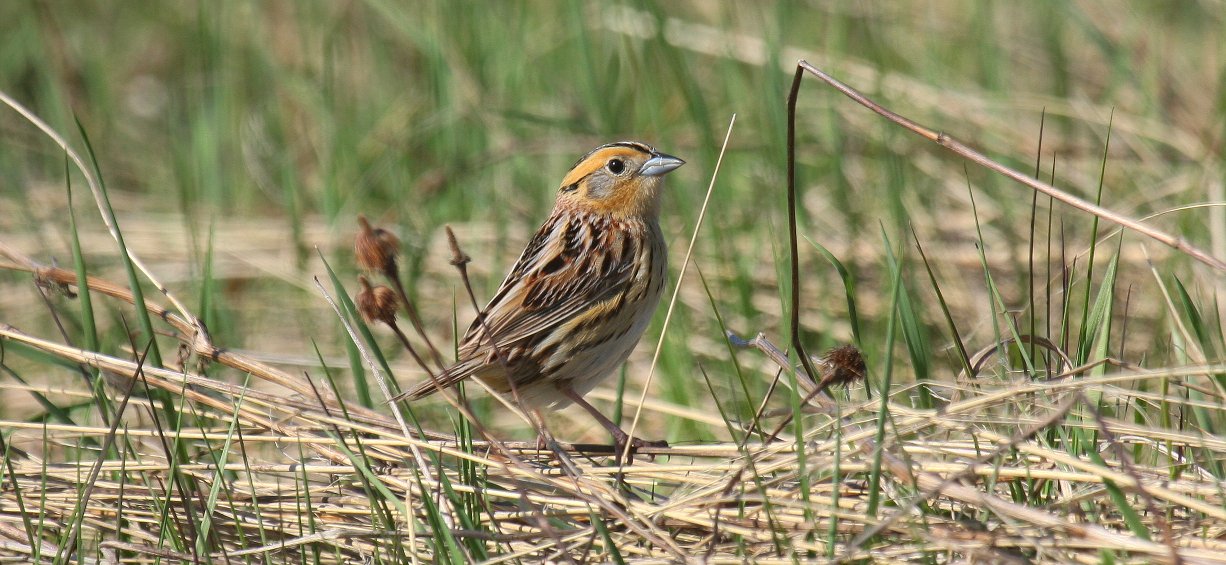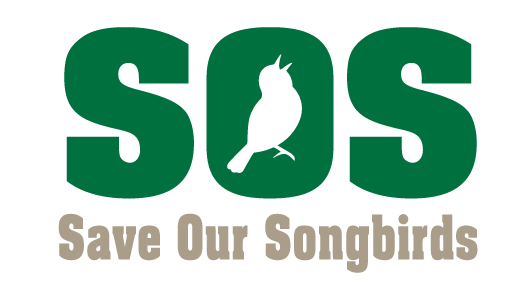
Threats to songbirds
LeConte’s Sparrow. Nick Anich
Bird populations are declining steeply across North America and worldwide and Wisconsin is experiencing these trends.
Globally, nearly half of the world’s roughly 11,000 bird species are declining and 1 in 8 is currently threatened with extinction, according to BirdLife International’s State of the World’s Birds 2022.
In North America, nearly 3 billion birds have vanished since 1970, a drop of nearly 30%, according to a landmark 2019 study by major bird groups. Sparrows, warblers, blackbirds and finches, all songbirds, were among the hardest hit.
In Wisconsin, grassland and northern forest birds have suffered significant declines, with both rare and once common species affected. Connecticut Warblers, Western Meadowlarks and Evening Grosbeaks all declined by at least two-thirds over the past 20 years, according to the Wisconsin Breeding Bird Atlas II Survey.
What’s causing the declines?
Habitat destruction and degradation are widely recognized as the biggest causes of bird declines in North America and in Wisconsin. “Our results signal an urgent need to address the ongoing threats of habitat loss, agricultural intensification, coastal disturbance, and direct anthropogenic mortality, all exacerbated by climate change, to avert continued biodiversity loss and potential collapse of the continental avifauna,” concluded the authors of the 2019 study on bird loss in North America since 1970.
“Direct anthropogenic mortality” includes feral and free-ranging pet cats preying on birds, and birds colliding with buildings, which ranked at the top two bird killers, according to 2015 research examining human-caused bird loss.
Can small changes at home really make a difference?
Small changes we can make at home can give birds more and safer places to live: adding native plants that provide food and shelter, taking steps to prevent birds flying into problem windows, and buying coffee grown in ways that’s better for birds.
These actions are particularly important because birds and other wild animals and plants are running out of places to live. Humans have altered 75% of the Earth’s surface and 95% in the United States, according to Douglas Tallamy, author of Bringing Nature Home and a founder of Homegrown National Park, a grassroots effort to add 20 million acres of native plantings in the U.S., roughly the equivalent of half of suburban lawns. “It is increasingly clear that much of our wildlife will not be able to survive unless food, shelter and nest sites can be found in suburban habitats.”
What birds are at greatest risk of extinction?
68 bird species in Wisconsin are identified as Species in Greatest Need of Conservation, SGCN, because they’re officially listed as endangered, threatened or of special concern because of low or declining populations. Not all are songbirds, but many are. Here’s the list from Wisconsin DNR’s Wisconsin Wildlife Action Plan and links to DNR species web pages. More basic information, photos and sounds can be found on All About Birds, the online bird guide from Cornell University’s Lab of Ornithology.
Common Goldeneye
Red-shouldered Hawk
Rufa Red Knot
Swainson's Thrush
Piping Plover
Black Tern
Lark Sparrow
Common Nighthawk
Evening Grosbeak
Northern Bobwhite
Olive-sided Flycatcher
Yellow Rail
Greater Prairie-Chicken
Sharp-tailed Grouse
Bobolink
Least Flycatcher
Acadian Flycatcher
Rusty Blackbird
Brewer's Blackbird
Spruce Grouse
Peregrine Falcon
Kentucky Warbler
Whooping Crane
Worm-eating Warbler
Black-necked Stilt
Caspian Tern
Yellow-breasted Chat
Dickcissel
Least Bittern
Loggerhead Shrike
Red-headed Woodpecker
Yellow-crowned Night-Heron
Black-crowned Night-Heron
Connecticut Warbler
Canada Jay
Wilson's Phalarope
Black-backed Woodpecker
Red-necked Grebe
Boreal Chickadee
Vesper Sparrow
Purple Martin
Prothonotary Warbler
King Rail
Ruby-crowned Kinglet
American Woodcock
Cerulean Warbler
Hooded Warbler
Yellow-throated Warbler
Kirtland's Warbler
Forster's Tern
Common Tern
Eastern Meadowlark
Western Meadowlark
What’s the impact of these declines?
The population declines are affecting the future survival of hundreds of bird species worldwide. Beyond the impacts to those species, however, the loss in abundance will have a significant impact on the ecosystems those birds belong to, and the people who depend on those ecosystems for clean air, clean water, food and many more services.
“This loss of bird abundance signals an urgent need to address threats to avert future bird population collapse and associated loss of ecosystem integrity, function, and services,” the researchers behind the 2019 North American study concluded.
